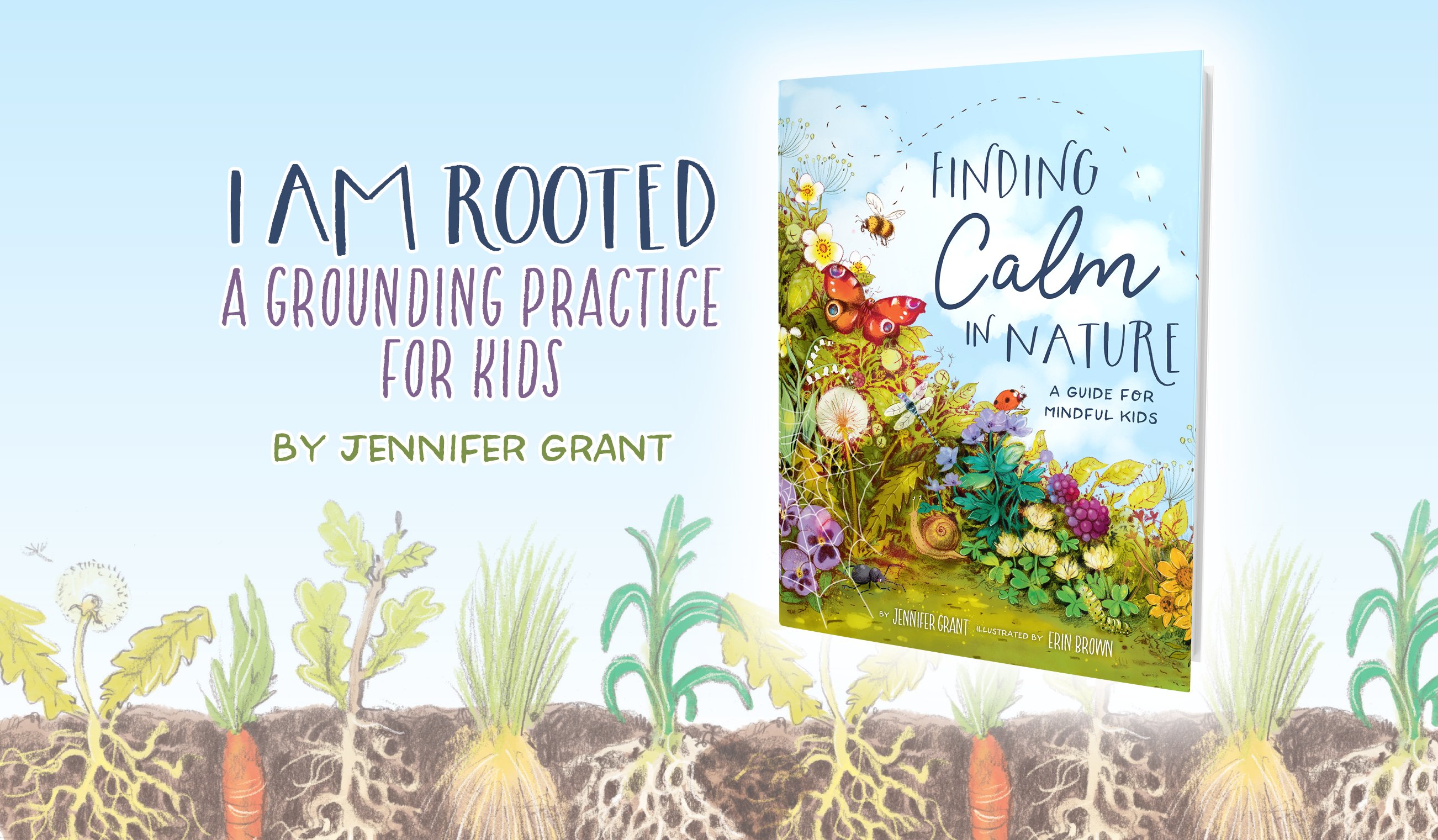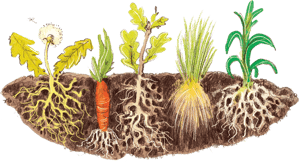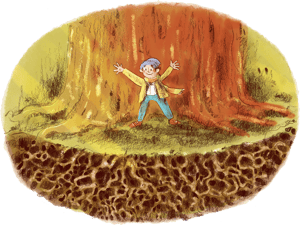Roots are the underground parts of plants. They have tiny “root hairs” that soak up water and minerals from the soil to keep plants healthy. Roots also help plants stand up straight and not blow over when it’s windy or stormy.
When people talk about their “roots,” sometimes they are talking about the place where they used to live or faraway places where their grandparents or other people they love now live.
“I live in Chicago,” a person might say. “But my roots are in Dallas.”
Another way people use the word roots to talk about themselves has to do with the things that matter most to them.
“My love of art is rooted in the fact that my mother is a painter,” a person could say.
Or you could say, “My love for unicorns is deeply rooted. I’ve loved them since I was two years old!”
People we love and trust “keep us rooted.” When we are going through hard times, these people help us and listen to us. They stay with us. This helps us to be strong, just like the roots of plants feed and support them and keep them strong, even in the harshest storms.
Who Are the Trees in Your Human “Forest”?
Maybe you’re rooted with people in your family, with your teachers or neighbors, or with your friends. These people open the door for you, listen when you tell them what happened at school or at the park, and stand beside you year after year. You grow, and they stay with you. They are kind to you, give you good things to eat, help you when you have trouble figuring something out, and take you where you need to go.
Who Roots You?
Take a few moments to think about the trees in your forest. You could even sketch a forest and label the trees with the names of people who you love and depend on.
Redwood trees grow in an area about 500 miles long, from the southwestern tip of Oregon down the coast of California. Redwoods are the tallest trees in the world. They are giants, and they can live for hundreds—or even thousands—of years!
Part of the reason redwoods can live so long is their special bark, which is soft, reddish brown, and 6–12 inches thick. This bark protects the trees from forest fires. A fire might scorch the tree’s outer bark, but the inside of the tree is kept safe from harm. This thick bark also keeps insects, such as termites, away. The bark on a redwood tree is rough to the touch, but the underside is silky smooth.
Are you surprised to learn that redwood trees, which are hundreds of feet tall, have very shallow roots? Their root systems are sometimes only about 5 or 6 feet deep. Instead of growing a deep taproot, redwood trees spread their shallow roots out over 100 feet and connect with the roots of other trees, forming an interwoven root mass beneath the forest floor.
Redwoods, just like people, live in community and thrive when they support each other.
Practice Being Grounded
Imagine that you are standing in front of a massive redwood tree. Picture the tree’s roots underground, spreading out far into the silent forest.
Like this tree, you are connected to a web of other living beings. The people in your life support you, and you support them.
You have a sturdy root system that feeds you and helps you to be strong.
Think of one kind thing someone has done for you this week. Breathe in and out, relaxing in that memory.
Think of one kind thing you can do for someone else. Close your eyes and imagine what it feels like when you do this. Imagine the happiness you can give to another person by being kind.
Now stand up where you are, if you can. If you can’t, just put your feet down flat on the floor.
Imagine that you are a tree and that your feet are rooted in the earth. Be still for a few moments, knowing that you are like a tree, still and grounded and at peace. Know that you, like the redwood trees, are part of a community.
If you like, you could repeat the words, or mantra, “I am part of something bigger than myself” or “I am not alone” in your mind.
This is an excerpt from Finding Calm in Nature.





